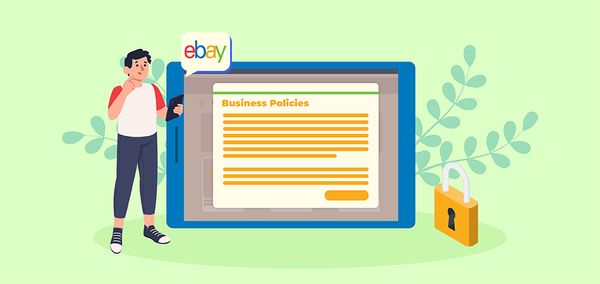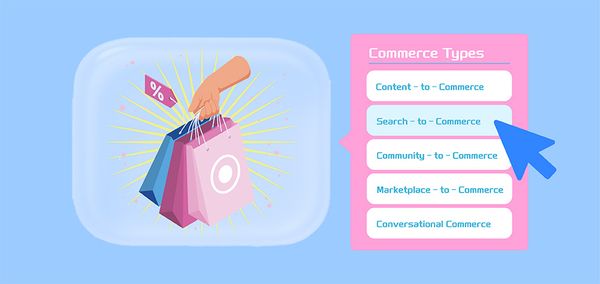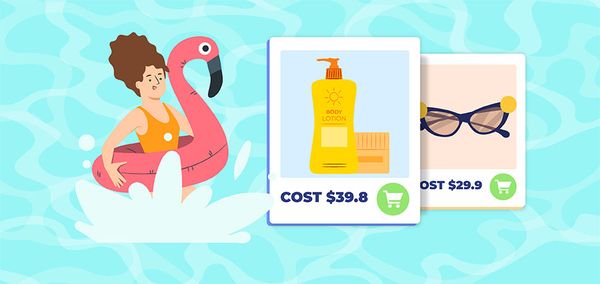Small Business Marketing: Ultimate Guide to Success

Small company marketing is a dynamic environment. It is continuously changing, and entrepreneurs must keep current in order to get the most bang for their marketing money. However, getting started might be intimidating— it may look like stepping into Disney World without a guide or strategy.
But, the question is, where should you start?
Should your small business begin cold phoning potential customers? Or would it be preferable to try to break into the Clubhouse scene? Perhaps you can use SEO content writing to your advantage. How about podcasting? Oh, and video is currently king on the internet—why not establish your own YouTube channel?
See how simple it is to become disoriented? You can't afford to toss darts at the marketing wheel to see what sticks unless you have money to burn and time to spend. Instead, you must develop reasonable estimations, fine-tune your plan, and execute it flawlessly.
You probably don't have a huge marketing team or budget, which is OK. You can succeed with a small staff and little resources, but you'll need to get your targeting and campaigns down pat.
That's easier said than done, but not anymore; we have compiled this comprehensive guide to small company marketing. This precise guide will help you through the process of launching your marketing program. We'll demonstrate:
- Which assets are non-negotiable? (regardless of your industry)
- How to Gain In-Depth Knowledge About Your Customer Base
- The top 5 marketing tactics for small businesses (and which to use)
- The precise way to Prepare Your Small Business Marketing Budget?
- How to Use Analytics to Get the Most Out of Your Marketing?
How to Market a Small Business to Boost Overall Revenue
Marketing strategies have evolved throughout the previous century. Consider Henry Ford's early automobiles: "Any colour they choose... as long as it's black," he declared. In today's world, you can find almost every product in every hue of the rainbow and more.
It's not that Ford was a lousy businessman; far from it. However, times change, cultures shift, behaviours shift, and customers adjust.
| Get Started Now to Grow Your Online Business with the Best AliExpress Dropshipping Tool - DSers! |
Several decades ago, you would advertise your small company on the radio, in the newspaper, and print. Instead, you're probably on Instagram, Email, and Google right now. And it may be something entirely different in 2030.
It all depends on your clients. However, regardless of your consumer preferences or sector, there are a few marketing materials that your company will want. So let's start there ahead of going on to more specialised strategies.
Small Business Marketing Assets You Must Have
Whether you own a quantum-computing firm or a regular cafe, your company needs a few essential marketing assets. Let's discuss each of them below:
1. Website
Every company needs a website. People may discover more about your company by visiting your website. It's an area where you can direct traffic, and individuals may travel independently. Your website is your own. Twitter may deactivate accounts at any time, Amazon can delist things, and Gmail can route all of your communications to the junk folder—but you have total control over your own domain. "On the internet, the [only] two things you can possess are email lists and websites." "Everything else is basically rented," said Shopify CEO Tobi Lutke.
2. Profiles on Social Media
Google is a company. Any local company. Examine the search results now. We'd assume that at least two of those first-page rankings are for social networking platform pages. Consumers now seek businesses on social media as a sign of credibility and relevance.
Whether you intend to use them frequently or not, have a grip on all of the extensive social media networks: Twitter, Instagram, Facebook, and LinkedIn. You can also use Snapchat, TikTok, and Pinterest if you like. Upload your company logo and complete up your contact and "about" information at the very least.
3. Email Account
Customers like to communicate with companies via Email. Therefore, your company needs an email account for marketing, sales, or customer service. Display it on your website, social media accounts, and marketing materials so your audience can easily reach you.
4. Business Page On Google
When you Google a company on Google Search or Google Maps, the information about that business (location, photographs, hours of operation, and more) will appear at the top of your search results, that's an example of a Google Business Profile.
Google automatically uses information from across the internet to produce company page listings. So, irrespective of whether you like it or not, if you don't claim and verify ownership of your Google Firm Profile, Google will likely show information (correct or not) about your business. So, maintain and update this listing—generally, it's the first thing clients discover when looking for your company.
Know Your Customer's Requirement First
Marketing is about what your customers want, not what you want. Before you get too far into the marketing weeds, you should discover more about your target demographic. Marketing is about your consumers, not you. It is about their desires, needs, concerns, and goals. Marketing ideas and methods are entertaining, but they are only one way to engage with your consumers.
For example, it makes little sense for a food truck to begin streaming on Twitch if there are no prospective consumers on the site. It may be exciting and fulfil an oh-so-satisfying entrepreneurial itch, but it will not drive foot traffic like a local partnership or focused SMS marketing.
Evaluate who your consumers are and what they desire. You may become really sophisticated and conduct more formal qualitative and quantitative research, but this can be costly. When you're just getting started, keep things basic and inexpensive.
Here are a few low-cost methods for gathering audience insights:
Surveys: To discover more about your consumers, send out basic questionnaires.
Industry research: Conduct an internet search for the most recent trends and information to discover more about your target audience through published studies and polls.
Speak with your customers: Talk to your consumers (or future customers) to find out what they like, hate, and desire.
Analytics: Use your marketing platform analytics to discover more about your audience by analysing open rates, click-through rates, and auto-populated demographics.
Top 5 Marketing Strategies to Boost Small Business
Now comes the exciting part: deciding on your marketing approach. This is not an exhaustive list, but it provides an excellent starting point for the most tried-and-true strategies and channels. Don't attempt to utilise them all. Don't even try to do the majority of them. Instead, choose one or two (maybe three) of the channels you feel would best connect with your audience and work on perfecting them.
1. Email Marketing
"Experts" have often forecast the demise of Email. Sorry, Zuckerburg, but Email is still at the top and helping people well—and shows no signs of slowing down. Undoubtedly, Email is still the most widely used form of digital identity in the world, with over 4 billion users.
Consider this. How can you access your bank account, payroll system, or even Facebook? With a valid email address. Email delivers a massive 122 percent ROI and may go much higher. Sending a few thousand emails is inexpensive, yet a single transaction from those emails might be worth hundreds or thousands of dollars. Email marketing entails a lot of work. From designing conversion funnels and win-back campaigns to growing an engaged audience, Email might be your single marketing medium.
2. Marketing on Social Media
Social media is a one-of-a-kind organic and paid marketing option with limitless possibilities. You may work with local influencers, Livestream, run paid advertisements, or sell straight through platforms.
With so many alternatives, the most challenging element is deciding on a strategy. You'll find it difficult to resist shiny object syndrome, but you'll need to conquer it if you want to excel in this medium. Choose a few channels only (it could be one or two channels) to focus on and narrow your marketing approaches. You may, for example, try Twitter advertisements or Instagram influencers. Refine your approach and avoid the impulse to abandon ship if things don't go as planned. It normally takes some time for social media marketing to pay off.
3. Content Promotion
This simple marketing method makes it easy to be sidetracked, so stay focused and stick to your plan. For example, if you're going to focus on search engine optimization (SEO), plan on at least nine months of blog writing, site reorganisation, and link development.
4. Text (SMS) Marketing
SMS marketing (sometimes referred to as text message marketing) is quickly becoming one of the most popular marketing platforms. Almost everyone owns a phone, and nearly half of the world's population owns a smartphone. Texting is a quick and easy method to catch your customer's attention, and it's one of the fastest ways to get their attention.
According to Shopify, a whole sales cycle may be completed in under 30 seconds through SMS. Yes, you read that correctly. Thirty seconds Furthermore, people read 90% of SMS marketing messages in under 3 minutes. That was quick! Nations have utilised text message marketing all over the world for years, but it is just now gaining traction in the United States. Because not every company has jumped on board, there is still room for startups to be early(ish) adopters.
5. Outdoor Advertising (OOH)
Have you ever heard of the fictional country of Little America? You probably haven't travelled the length of I-80 through Wyoming. However, if you've travelled across Western Wyoming, you'll know all there is to know about the modest hotel and resort—even if you've never been there.
What's the deal? Because Little America's long-running billboard campaign is the pinnacle of effective out-of-home advertising. They've thoughtfully placed billboards (both large and little) along hundreds of miles of the open road, advertising anything from ice cream cones to hotels. OOH, advertising isn't suitable for every business, but if you run a restaurant, motel, or retail store that relies on in-person consumers, it's a tried-and-true marketing strategy.
Estimating Your Budget for Small Business Marketing
Your industry, business size, and development stage will all impact your marketing budget. Although there is no magic number, the US Small Business Administration (SBA) recommends investing 7% to 8% of your income in marketing. You'll most likely need to invest more in marketing to raise recognition and gain your first customers when you're just starting. You won't be able to support your marketing through sales; therefore, you'll need significant bootstrapping, a small company loan, or equity funding. Continue to make budget adjustments. Examine your financial records and analytics to evaluate what's working and what's not.
For example, if increasing your Facebook Ads spend results in an incremental increase in income, you may simply want to throw more money at the machine and see whether it continues to expand. On the other hand, if your text message marketing strategy isn't generating many sales, you may choose to reallocate your funding to another channel.
Keep in mind that every marketing has a cost. No such thing as a free lunch exists. There is still an expense, whether it be SEO or word-of-mouth marketing. If it doesn't cost money, it will most certainly cost time—a lot of it. And time equals money.
Also, bear in mind that marketing is an ongoing process. You can scale it up or down, but you never turn it off: not during a recession, not during a worldwide epidemic, not during a lockdown, not ever.
When one channel (door) shuts, another opens. Document your marketing strategy and review it on a regular basis to guarantee you're getting the most bang for your cash.
Analytics: The Data Behind Getting the Most Out of Your Marketing
All your marketing activities revolve around your data, which is a gold mine. It decides your marketing tactics, timing, and budgets by determining who, what, where, and how.
Data should be used to guide all of your small company marketing decisions. If you want to start running Instagram advertisements, make sure you have stats and financial projections to back it up. If you want to boost your email marketing budget, be sure there are facts to support your choice. You should reconsider if you didn't discover statistics to back up a marketing move. Fortunately, the more marketing you perform, the more data you acquire, which aids in the refinement of your future marketing efforts.
Summary
It may sound trite (and it most certainly is), but the most challenging aspect of small company marketing is getting the start. Marketing is an extremely important, ever-changing world full of enormous possibilities, dazzling products, and money-sucking distractions—but it gets simpler as you go.
Begin small. You don't always have to throw or invest thousands of dollars at the wall to see what sticks. Instead, analyse your target demographic, select a few marketing channels, begin a campaign, and monitor its success. If you observe positive outcomes, scale your success. If you don't, try a different channel or marketing plan.
It is not an option to avoid marketing (unless you are Tesla). There is too much real-world and digital clutter to get seen if you remain on the sidelines—you must place your company front and centre to grab your clients' attention and cash.s
The most opted marketing technique is to use sponsored advertising on YouTube. Want to "boost up your brand" on one of the world's most active platforms? Visit DSers to grab the professional industry suggestions for fruitful results.













 Company
Company
 Why Choose DSers
Why Choose DSers
 Blog
Blog
 Help Center
Help Center




 Live Chat
Live Chat